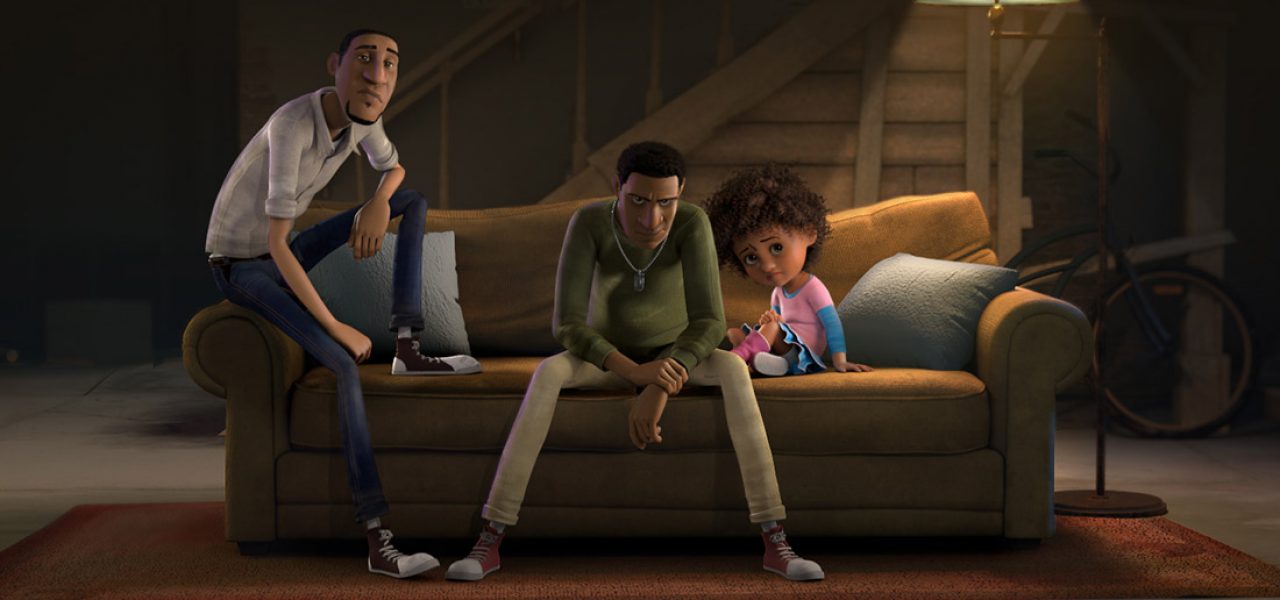
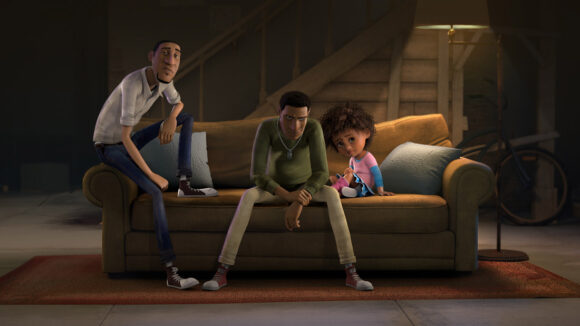
EXCLUSIVE TEASER: ‘Substance,’ A New Film By Jamaal Bradley
Animation and video game industry veteran Jamaal Bradley is making his directorial debut with the animated short film Substance, which is set to debut on the festival circuit in early 2019.
Directed, written, and produced by Bradley, Substance explores the divergent paths of two brothers. Cartoon Brew debuts the film’s first teaser below:
Bradley has worked as a senior or supervising animator at studios like Disney and Dreawmorks. His credits include Tangled, Puss in Boots, The Croods series, Kung Fu Panda 3, and Penguins of Madagascar. He has also worked in the games industry for many years, and currently works as a senior animator at Valve Corporation. His game credits include Left 4 Dead 1 & 2, Team Fortress 2, and Medal of Honor: Breakthrough.
Substance is the first film developed by Bradley’s PopWilly Productions. Teaming with Bradley on the short is lead story artist Michael Yates (Pixar), and executive producers Bruce W. Smith (Sony Animation) and Ken Birdwell (co-founder of Valve Corporation). Bradley worked with Gixel Technologies in Chennai, India for post production and finaling. Composer Stephen ‘Bud’da’ Anderson provides the film’s score, accompanied by the vocals of Adolphus “Scottie” Scott III and Avery Sunshine.
Cartoon Brew also served as an associate producer on Substance. It marks the second film in which Cartoon Brew has had such a role, following our involvement with the 2017 Ottawa Int’l Animation Festival grand prize winner Ugly. Our support of Substance strengthens a commitment to championing animated films that stretch the boundaries of the art form through innovative storytelling and artistry.
In the interview below with Bradley, we spoke about the genesis of the project, how he balanced a successful career in the industry and the production of a feature film-quality independent short film, and the importance for minorities to see representations of themselves in visual storytelling.
Cartoon Brew: What made you decide to make an independent film at this point in your career, or was it something that you’ve always wanted to do?
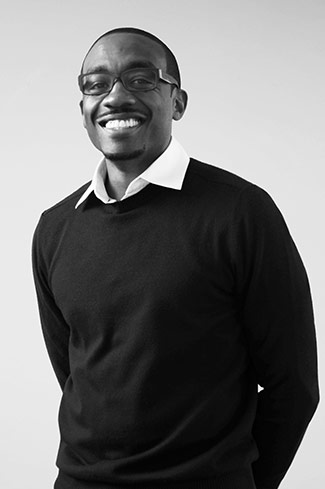
Jamaal Bradley: I think most animators have story ideas and I’m no different. The big obstacle is usually the timing and the time to execute on the things that pop in your head. I got hired out of animation school before I could get a chance to make a film and it has always bothered me. Many of my early film ideas were inspired by the classic things you would see in cg shorts during the early 2000s, but the more I wrote, it made me realize these weren’t the things that I loved about animation. I liked the gritty side of life and I thought why couldn’t I show that in animation. I sat on those thoughts for years. A lot of time went by and the deeper I got into my animation career I started to reflect on how far I had come.
Although I was making great strides in my life, others in my family were hitting real obstacles. Things that would affect me as well. So I began to write about these struggles and turn them into many different stories. I started to draw characters and that led to very rough storyboards which then flowed into notes about who the characters were. The film was forming and I didn’t realize it; I was just releasing something in the way I knew how. Looking back on that, it was a form of therapy. I was really creating the bones of the project before jumping head first into the unknown. Glen Keane said something to me years ago on Tangled after my first daughter was born: “Jamaal, your work is going to change… you are going to look at life so differently because of her.” He was right because her birth [became] a catalyst for me to look at my ideas through the lens of my own life.
Did you continue to work in the industry while making Substance or did you take time off to make this?
Jamaal Bradley: I definitely continued to work in the industry, I have a family to take care of (laughing). A chunk of the leg work was done when I was living in India while supervising animation on Penguins of Madagascar. My family stayed behind in Los Angeles while I worked abroad, so this gave me A LOT of time alone in the off hours. The large part of what I did during that time was drawing and writing. Although my family wasn’t there it was still very tough to balance the work.
So how were you able to balance your time between a studio job and making an independent film?
Jamaal Bradley: You have to understand that when you’re working on a film as a supervisor where the project is being created on two continents, it’s like you are working 24 hours. Emails are coming all day and when you get home at night, the U.S. emails start. I found a balance by working two nights on my stuff during the weekday and the entire weekend was devoted to the project. This was done for almost two years. You can get a lot done in an hour.
The big stride started when modeler Mridul Sen and I began to create our first character, which is barely in the film. We had to take strategic steps, meaning, working on a small production we didn’t have the bandwidth to make the huge strides, so being methodical about what we started with was key. The drawings helped get the modeler excited; the story helped get our lead story artist/co-writer on board; the animation tests help excite potential animators and artists; refined models helped get the technical artists; and so on. This allowed us to space out who came on to help and when. By working in waves, I found this was the best way to manage my time on the production.
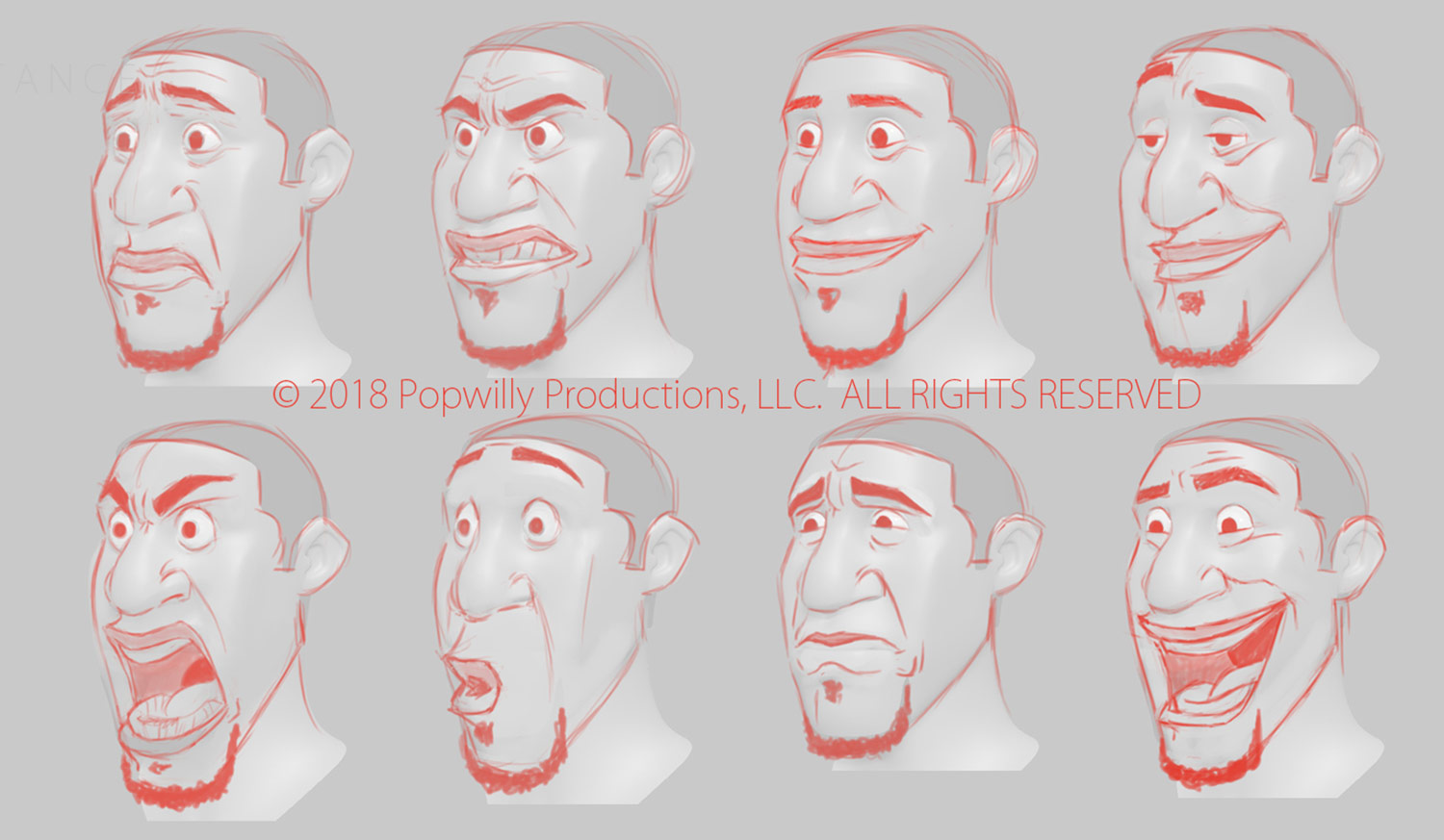
After years of working as an animator in feature and games, how prepared were you to direct?
Jamaal Bradley: Working in the industry is the best teacher if you pay attention outside of what is happening in your shot. At every studio I worked at, I would snoop around. Visiting the story artists and introducing myself, or just being in another area and saying, “What’s up?” to someone I didn’t know would spark a conversation. Especially when I was super new in feature — being a respectful ‘fan boy’ helped me meet a lot of people I looked up to. I met our film’s Consulting CFX Supervisor at Sony Imageworks over a decade ago just walking around the floor. We linked back up again when we were both at Dreamworks. Meeting people in other departments, building relationships with my supervisors, and listening closely to the directors let me see what they were doing on the shots and develop a bigger understanding of the production pipeline.
Working at Valve (the first time I was there), I got my chance to prove with my colleagues that we could create some story-driven content with game characters. It turned out to be a big success and it showed me exactly what I did NOT know. The great thing about that was I had my peers to offset my weaknesses which helped me learn even more. Once I became a supervisor, I was involved in so much more of the process. Working extremely close to the leads in each department was some great schooling. Being sure to listen close in all the meetings, adding to the conversation with useful data, and taking away the right information to make sound decisions. All this would translate to my personal film.
I have to give a lot of credit to working at Valve. The process we use at the studio allows all of the employees to make decisions not only from an artistic standpoint, but on a product and consumer level. Also working in small teams enables a large amount of flexibility. Being in this environment gave me the skills to choose what parts of the short would have the highest return in value for the story. This would help the final product have the best outcome for what I wanted to say and therefore hopefully giving the viewer something memorable.
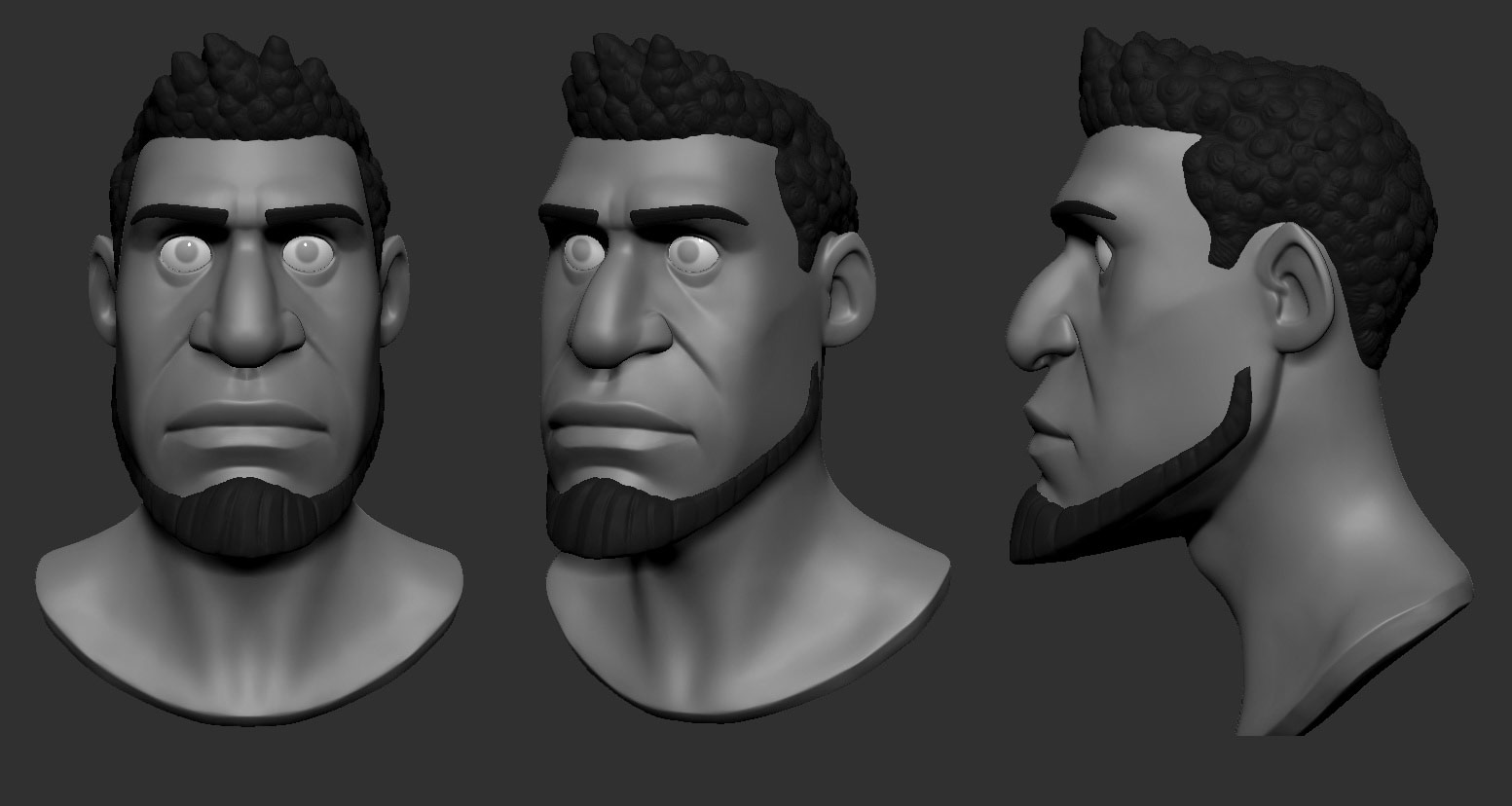
What areas did you have to improve yourself and how big was the learning curve?
Jamaal Bradley: There were many things to learn making this project. I can’t say I was prepared to make the short but more like READY to make it. This may sound corny but, if your heart and soul tells you that you are ready to take on something (whatever it is), then do it. This was my second attempt at making a short film, so I was determined to get through some of the hurdles I hit on the first one. Even with that in mind, I think the biggest learning curve was really understanding all the bits and pieces of compiling a small film. Building a working pipeline with the team from the ground up, learning about how cloth and hair TRULY work within the pipeline, learning how to pivot when issues arise without disrupting the team, gaining more knowledge from the lighting supervisor and crew…. There was just so much about production that you slightly know about, but being knee-deep in the execution outside of animating was very eye opening.
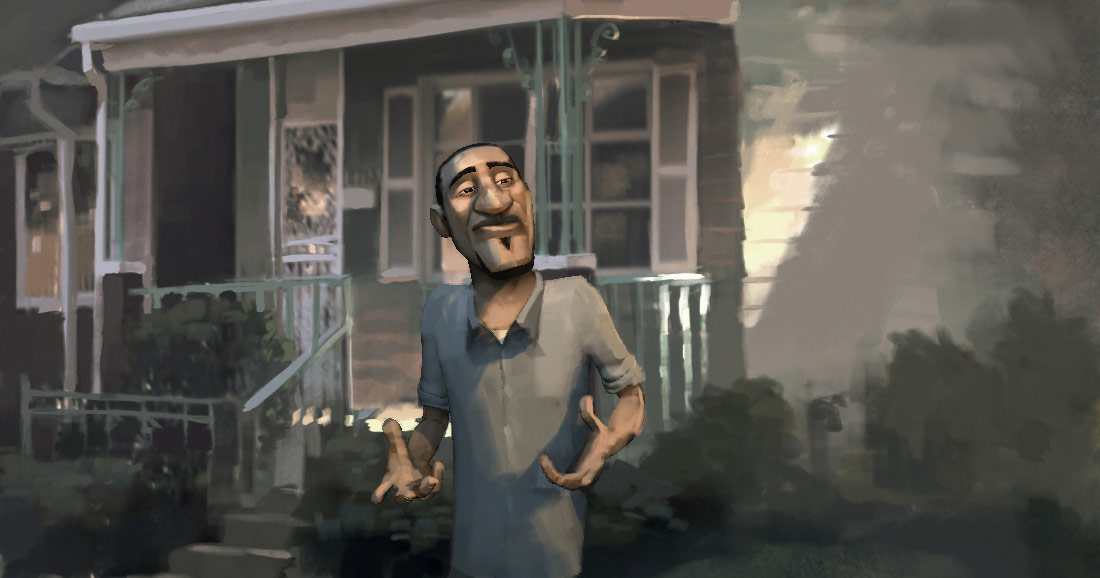
Tell me a little bit about your crew. How big was it, what did you do, and what did you hire others to do?
Jamaal Bradley: I am truly grateful to the guys that helped me on this. I have told them many times, “Thank you… I love you guys.” They have been a part of the dedication, and hopefully it helped give energy to the project at times. Pushing us through the ups and downs, the gaps in production when I was moving back to Washington, and the unforeseen walls that would come up. We are a very small group of dedicated professionals. Most of the people working on Substance are also creative outside of work, meaning they have their own personal ambitions as well. I think allowing the team to see that you are personally invested let’s them know their efforts wont be wasted. That was a big driving influence for we as well — “I don’t want to waste their time…I can’t waste their time”.
The entire force never worked all at one time. In total, it was around 30 people that took part in the short. There was never a time when we had over six people working on it at once. Like I was saying, working in waves was the best way to ensure that things were getting completed and reduce the amount of “turnover.” We had a few animators on board early in, but as production started to roll, people had other obligations on their plate so some things were half finished or semi-started. I planned on animating regardless, but I ended up doing a very large part of the animation in the film.
Lighting and Look Dev had some similar issues with staff, but we pushed through with the details we had and also used live-action films to find our inspiration for the look. The key players were definitely our modeler: Mridul Sen, our lead surface artist; Nikie Monteleone; the rigging lead; Dilip Lawani, the CFX Supervisor; Eric Warren, and last but not least at all, Michael Yates, who is my co-writer and lead story artist. He and I hammered on the story for two years after my initial versions. Although I started boarding, his boards really brought life to all of the ideas. Once all the pieces started to come together we were able to add the musical talents of Stephen “Bud’da” Anderson and the vocal beauty of Adolphus “Scottie” Scott III and my longtime friend Avery Sunshine. These guys can sing directly into your soul. I can’t wait for people to hear the music. It is so essential to the story and the feeling we wanted to get across.
Our executive producers — Bruce W. Smith and Ken Birdwell — have been true friends. I think one of the BIGGEST things to have on project like this is people believing in you. Having two people who have inspired me as my personal friends and fans of the project is immeasurable. Bruce inspired me to keep pushing to be an animator when the visibility to black animators working at the major studios wasn’t apparent to me. Ken was a light in the tunnel during a period when I was dealing with some of the real details the story is based on. Two respected industry vets who have your back — I cant express how fortunate I am to have them. You can learn more about all the people above at the film website.
Now this is key for those who are married and trying to make something personal. Your spouse has to support what you are doing 100%. You will never make it to the finish line if that is not in place. My wife saw the bigger vision (maybe more than I did) and although there were rough patches, she never deterred me. You can be assured I have been planning various ways to make up for her sacrifice and any lost time.
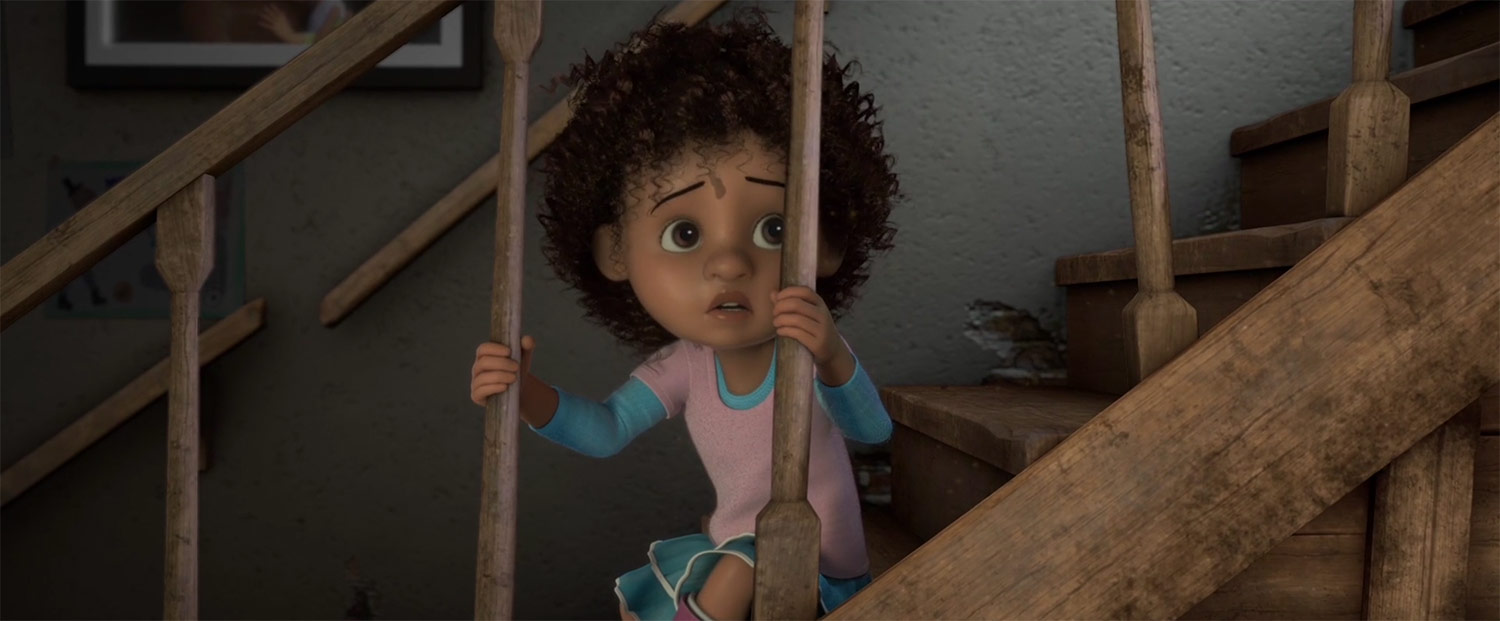
You said something on Twitter recently that struck me as quite interesting: “I’ve never been a fan of trying to force a studio MAKE BLACK CHARACTERS. The change only comes from hiring QUALIFIED artists of different backgrounds & give them the tools to move up in the ranks.” Can you expand more on this concept? What is the change that you’re referring to?
Jamaal Bradley: It’s an important thing to see a representation of yourself in visual storytelling. In my opinion for it to be successful, [especially] if it’s not a culture you are familiar with, it takes a big investment by the people creating it. The leaders have to really care about the culture they are trying to portray. So for me, it’s like begging someone to care of the things I love, to take the time and learn about where the people come from, and to truly invest in embracing the community. That is kind of what I was hinting at on social media when I stated ‘promoting’ qualified people. They will inject new ideas into the fold. It’s not easy to go outside of your comfort zone and create, but some of the best content has been made by taking such steps.
Do you think an independent project like Substance can contribute to a broader change in the industry and the type of content that we currently see being produced?
Jamaal Bradley: I think people have asked for decades and it has broken through many walls, but at some point you also have to try on your own. There are many top-tier film makers and artists who have done that. They have created enough content to have investors believe in their vision or have built a catalog with their own money. Those creators have been a huge inspiration.
Substance started as something personal for me, and I think a goal would be to inspire people to create things on their own. For the young brown kids to know that a minority — who is a hyper-minority in the animation industry — made something like this, it would blow me away for them to be excited about wanting to bring their ideas to life. I think the web and streaming companies can drive the change I was referring to. As it becomes easier to create this kind of content, there will be more ways to showcase it to millions (it is pretty close now). Also, it is our responsibility to inspire the next group behind us. Just make stuff, focus your ideas, and build your worlds.

.png)